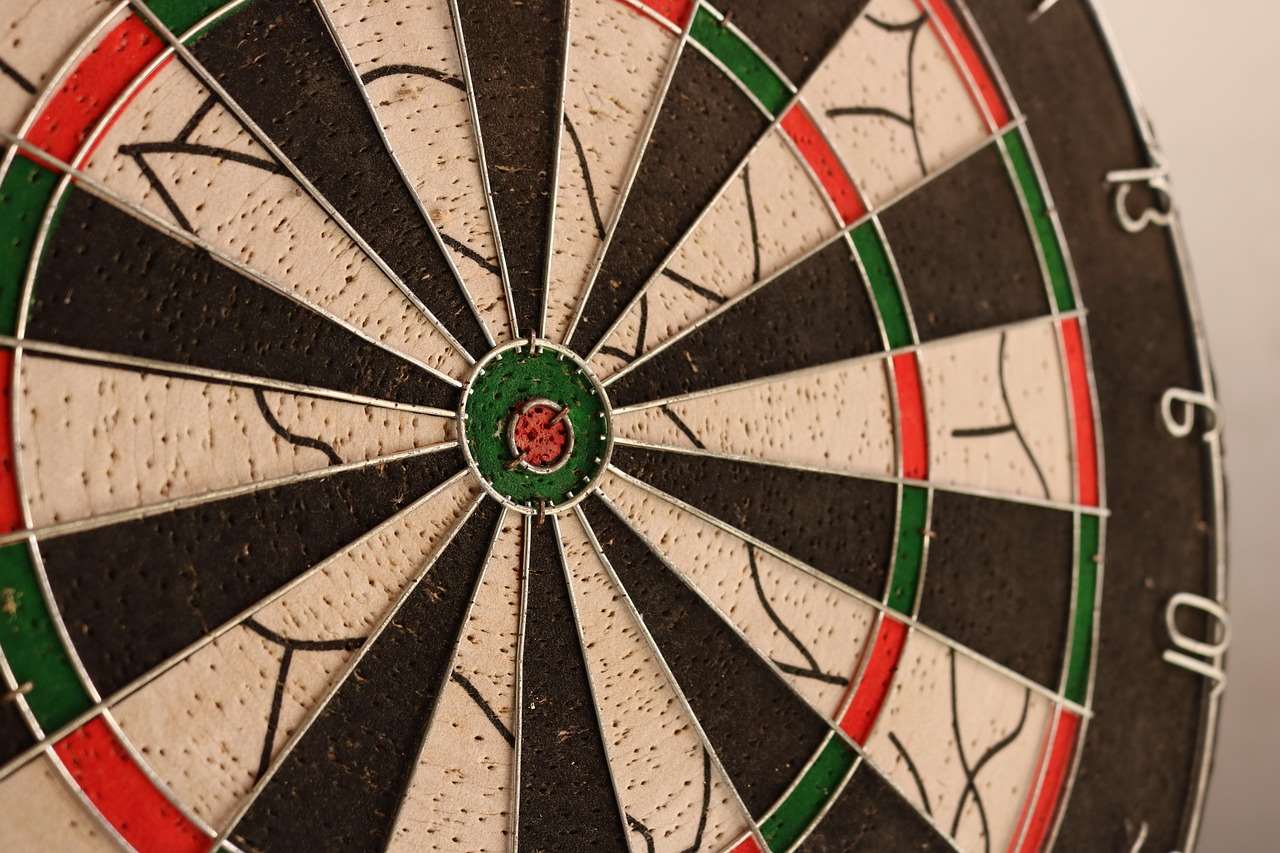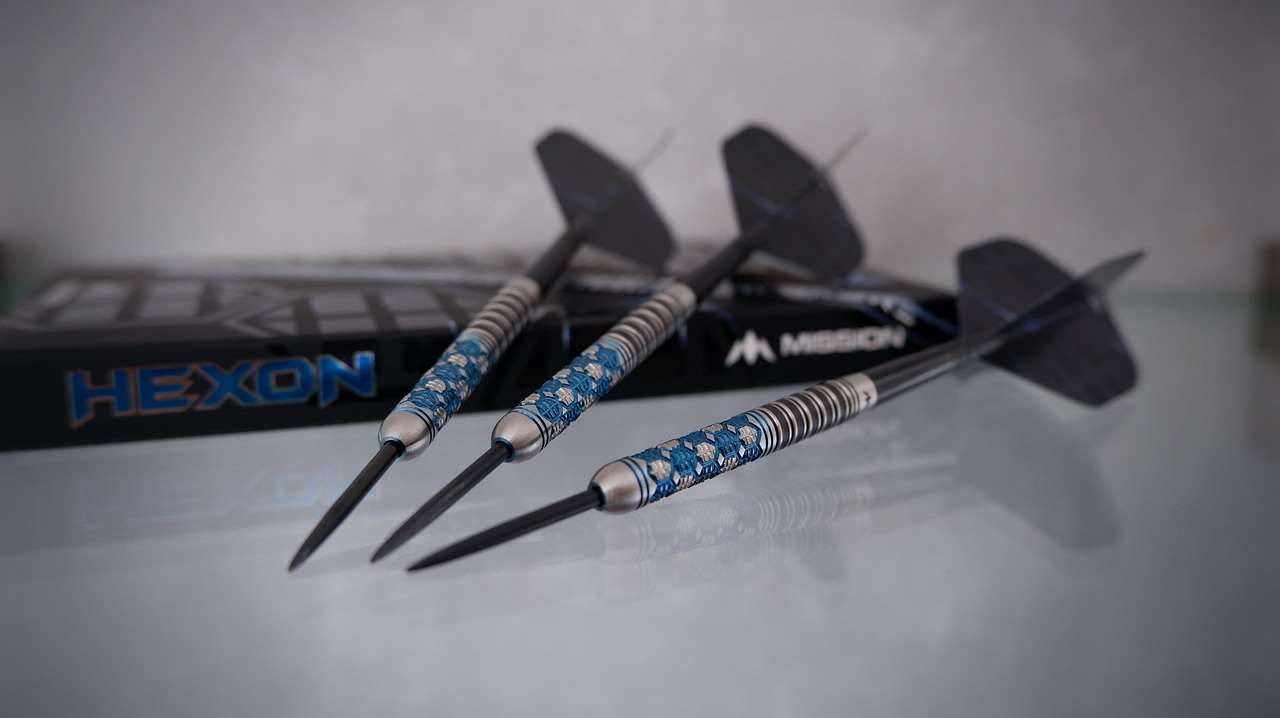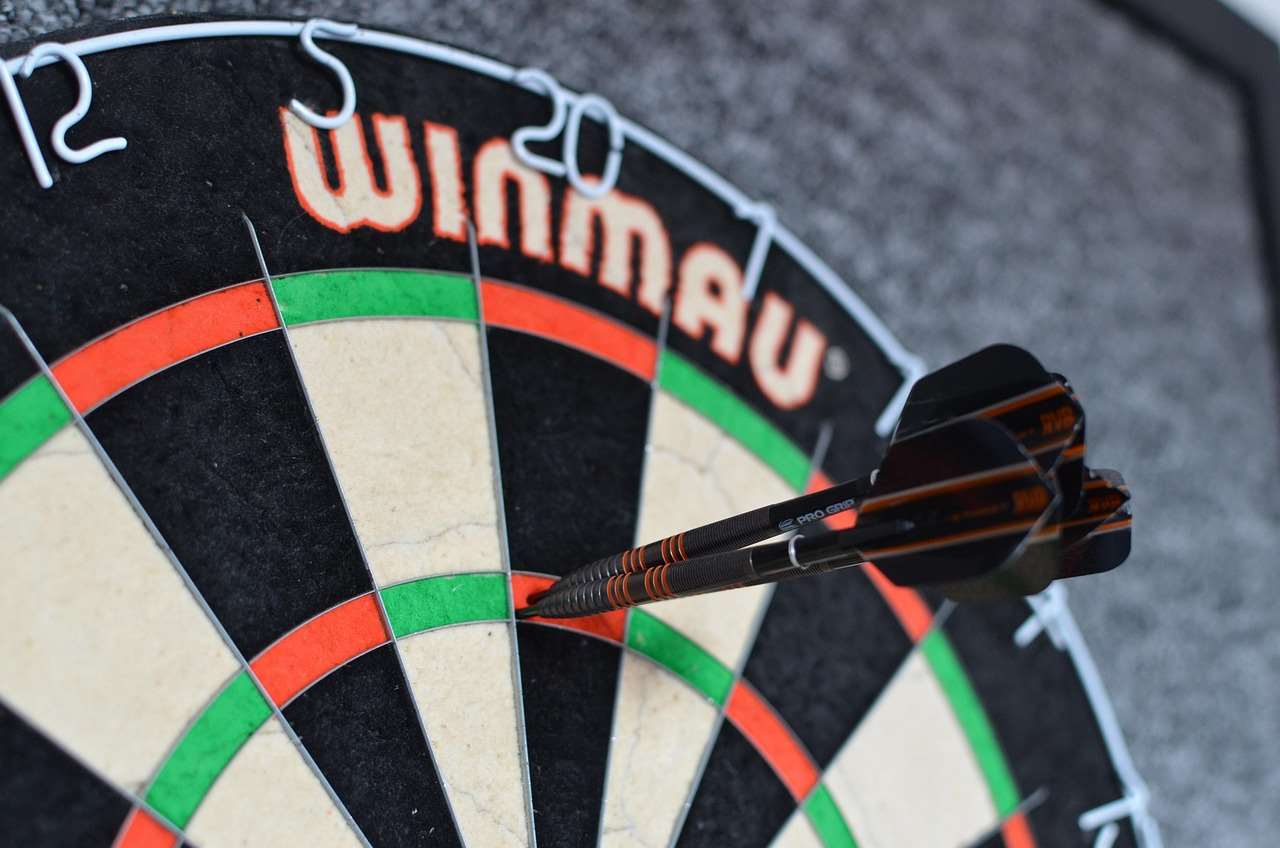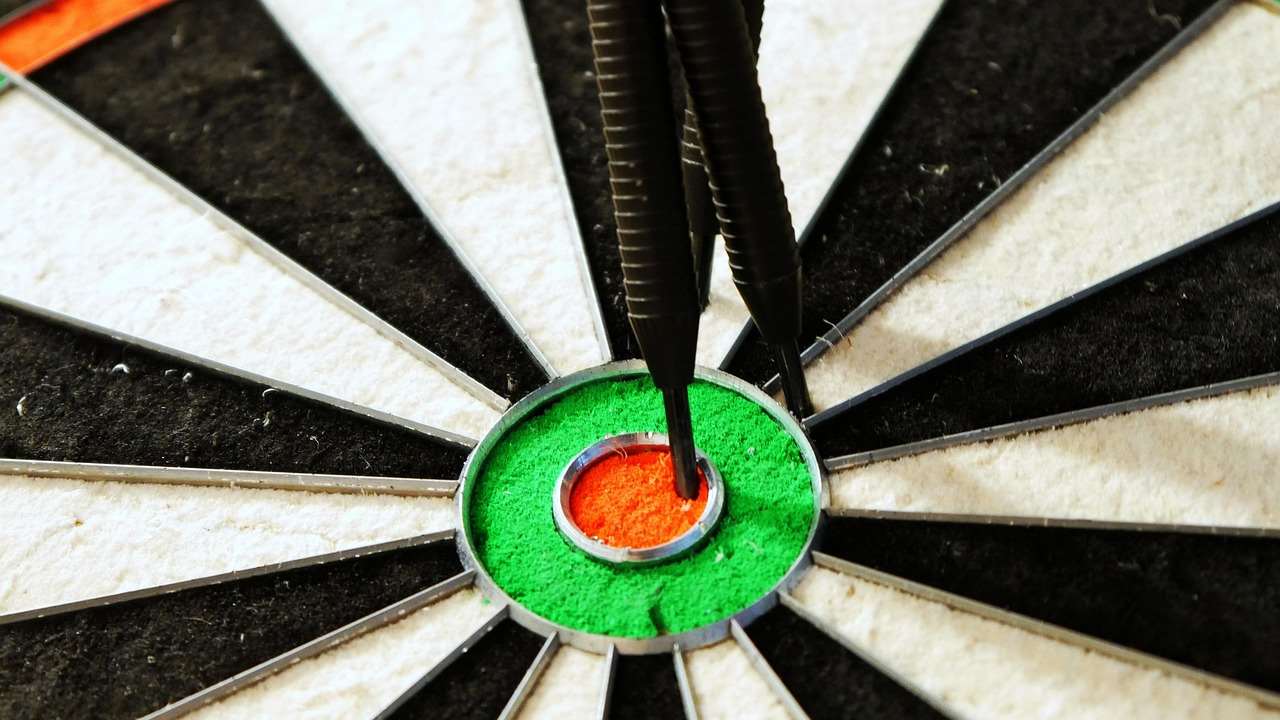Choosing the right dart weight is crucial for improving your accuracy and overall game. This darts weight guide will walk you through understanding how weight affects your throw, exploring different weight options, and ultimately helping you find the perfect weight for your individual style. We’ll cover everything from the standard weight ranges to the impact of materials and even offer some tips for experimenting with different weights.
⚠️ Still Using Pen & Paper (or a Chalkboard)?! ⚠️
Step into the future! The Dart Counter App handles all the scoring, suggests checkouts, and tracks your stats automatically. It's easier than you think!
Try the Smart Dart Counter App FREE!Ready for an upgrade? Click above!
Understanding How Darts Weight Impacts Your Throw
The weight of your dart significantly influences its trajectory and how it feels in your hand. A heavier dart tends to fly straighter and be less affected by minor imperfections in your throw. This can be beneficial for beginners or players who prefer a more stable feel. Conversely, a lighter dart requires more precision and control, but it can also allow for quicker adjustments and a more delicate touch. The best way to learn to throw accurate darts is to experiment and see what feels best.

When considering darts weight, it’s important to think about your throwing style. Do you have a smooth, consistent release, or is your throw more jerky and powerful? A heavier dart might suit a powerful throw, helping to stabilize it, while a lighter dart might be better for a smoother, more controlled action.
Heavier Darts: Pros and Cons
- Pros: More stable flight, less susceptible to wobble, better for beginners, can penetrate the dartboard more easily.
- Cons: Can be harder to control for players with a delicate touch, may tire your arm more quickly during longer games.
Lighter Darts: Pros and Cons
- Pros: Easier to control for players with a smooth release, less tiring, allows for quicker adjustments.
- Cons: More susceptible to wobble, requires more precision, may bounce out of the dartboard more often.
Exploring the Typical Darts Weight Guide Range
Darts typically range in weight from 16 grams to 30 grams, although most players find their sweet spot somewhere between 20 and 26 grams. The “standard” weight is often considered to be around 23-24 grams. When starting out, it’s a good idea to begin within this range and then experiment to find what works best for you. The best darts for you may fall outside this range, however.

Remember that the weight marked on the dart usually refers to the complete assembled dart (barrel, shaft, and flight). However, when making adjustments to the dart weight, only the barrel weight is usually discussed. For example, you might replace heavier dart shafts with lighter ones to fine tune the balance, but the general darts weight guide refers to the barrel.
Common Weight Ranges and Their Uses
- 16-20 grams: Typically used by younger players or those who prefer a very light feel.
- 20-24 grams: The most common range, suitable for a wide range of players and throwing styles.
- 24-26 grams: A good option for players who want a bit more stability and power in their throw.
- 26-30 grams: Generally used by experienced players with a strong, controlled throw.
Factors Beyond Darts Weight: Balance and Grip
While weight is crucial, balance and grip are also essential elements in finding the perfect dart. The balance point of the dart affects its flight and how it feels in your hand. Darts can be front-weighted, center-weighted, or rear-weighted.

Grip refers to the texture and design of the dart barrel, which affects how securely you can hold the dart. Different grips suit different throwing styles, and it’s important to find one that feels comfortable and allows for a consistent release. Consider also using a Dart Counter App (https://dartcounterapp.com/) to track your progress as you adjust your darts and your throwing technique.
Understanding Dart Balance
- Front-Weighted: Tend to fly straighter and are good for players who want a more direct throw.
- Center-Weighted: Offer a balanced feel and are suitable for a wide range of players.
- Rear-Weighted: Can be easier to control for players with a smooth, controlled release.
Choosing the Right Grip
- Knurled Grip: Provides a strong, textured grip.
- Ringed Grip: Offers a more subtle grip with consistent rings.
- Smooth Grip: Allows for a very clean release, but requires more control.
Experimenting to Find Your Ideal Darts Weight
The best way to determine the right darts weight for you is to experiment with different weights and styles. Start by trying a few different sets within the typical 20-26 gram range. Pay attention to how each dart feels in your hand, how it flies, and how consistent your throws are.
Consider buying adjustable weight darts. These allow you to add or remove small weights from the barrel, giving you even more control over the final weight and balance. This can be a great way to fine-tune your setup and find the perfect combination. You might also adjust the dart shaft längen to find the best balance.

Don’t be afraid to try something completely different. You might be surprised to find that a weight outside the typical range works best for you. The key is to be patient, persistent, and pay attention to how your body and your darts are responding.
Tips for Experimenting
- Keep a Record: Track your scores and how each dart feels.
- Be Patient: It takes time to adjust to a new weight.
- Focus on Consistency: Aim for a smooth, repeatable throw.
- Don’t Be Afraid to Adjust: Make small changes and see how they affect your game.
Materials and Their Impact on Darts Weight Guide Considerations
The material used to make the dart barrel also affects its weight and feel. Tungsten is the most popular material for high-quality darts because it is very dense, allowing for slimmer barrels that can be grouped tightly on the dartboard. Brass is a less expensive option, but it is less dense and therefore requires thicker barrels to achieve the same weight. Nickel-silver is another option that falls somewhere in between tungsten and brass in terms of density and cost.

The material doesn’t change the darts weight directly, but it does affect the barrel’s size and shape. A tungsten dart of 23 grams will be noticeably slimmer than a brass dart of the same weight, which can affect your grip and throwing style. Also, be sure to check for darts game right now so you can get some good practice in!
Popular Dart Materials
- Tungsten: High density, slim barrels, excellent grouping potential.
- Brass: Less expensive, thicker barrels, good for beginners.
- Nickel-Silver: A compromise between tungsten and brass.
Conclusion: Finding the Perfect Darts Weight for Your Game
Choosing the right darts weight is a personal journey, and there’s no one-size-fits-all answer. By understanding how weight, balance, and grip affect your throw, and by experimenting with different options, you can find the perfect setup to maximize your accuracy and enjoyment of the game. Remember to consider all the factors, and don’t be afraid to try something new. Happy darting! Ready to take your game to the next level? Start experimenting with different dart weights today and see the difference it makes!
Hi, I’m Dieter, and I created Dartcounter (Dartcounterapp.com). My motivation wasn’t being a darts expert – quite the opposite! When I first started playing, I loved the game but found keeping accurate scores and tracking stats difficult and distracting.
I figured I couldn’t be the only one struggling with this. So, I decided to build a solution: an easy-to-use application that everyone, no matter their experience level, could use to manage scoring effortlessly.
My goal for Dartcounter was simple: let the app handle the numbers – the scoring, the averages, the stats, even checkout suggestions – so players could focus purely on their throw and enjoying the game. It began as a way to solve my own beginner’s problem, and I’m thrilled it has grown into a helpful tool for the wider darts community.